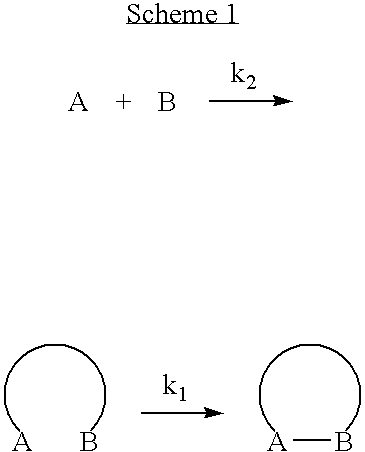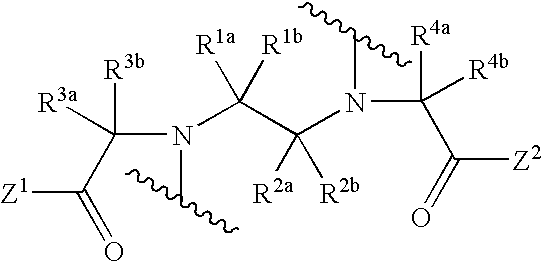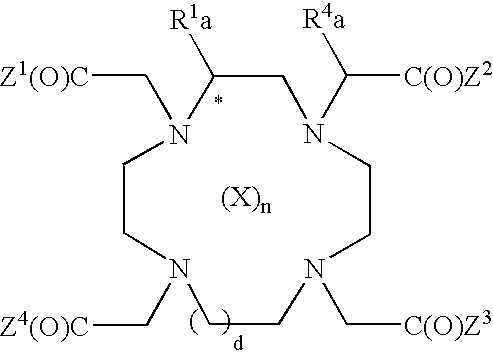Engineered antibody fragment that irreversibly binds an antigen
a technology of engineered antibodies and fragments, applied in the field of engineered antibody fragments, can solve the problems of high affinity reversible binding antibodies that cannot penetrate efficiently beyond the surface of tumors, binding-site barriers, and not remain, etc., to achieve better solid tumor permeability, reduce mass, and accelerate clearance
- Summary
- Abstract
- Description
- Claims
- Application Information
AI Technical Summary
Benefits of technology
Problems solved by technology
Method used
Image
Examples
example 1
Combining Antibody Specificity and Permanent Binding with Reference to the Crystal Structure of the Antibody-Ligand Complex
[0305] The following example illustrates the practicallity of combining antibody specificity and permanent binding. In this example, the available crystal structure of the antibody-ligand complex (Love, R. et al. Biochemistry 32, 10950-10959 (1993)) was used to facilitate the design of mutants. The antibody is a site-directed Cys mutant, made by conventional techniques, and is stable for weeks at 4° C. The ligand was selected empirically. The antibody-ligand attachment occurs efficiently in complex physiological media, making this approach to antibody-ligand systems with infinite affinity easily suitable for broad application.
[0306] Preparation of antibody-ligand pairs that possess the binding specificity of antibodies, but do not dissociate is achieved by taking advantage of the slow dissociation of the correct ligand from the antibody combining site. The slo...
example 2
High Affinity of 2D12.5 Antibody for Rare-Earth DOTA Complexes
[0314] This example illustrates the broad specificity and high affinity of the 2D12.5 antibody for rare earth-DOTA complexes that make the antibody particularly interesting for applications that take advantage of the unique characteristics of lanthanides.
[0315] The rare earths are rich in probe properties, such as the paramagnetism of Gd, the luminescence of Tb and Eu, and the nuclear properties of Lu and the group IIIB element Y. The chelating ligand DOTA binds transition metals and rare earths with extreme stability under physiological conditions, leading to its use in vivo. Therefore, the monoclonal antibody 2D12.5 (David A Goodwin et al., Journal of Nuclear Medicine, 33, 2006-2013 (1992)) developed against the DOTA analogue Y-BAD conjugated to the immunogenic protein KLH through a 2-iminothiolane linker and selected to bind specifically to Y-NBD (FIG. 8), was examined to determine the scope of its activity.
[0316] A...
example 3
Structural Determination of Y-(S)—HETD-2D12.5 Fab Complexes
[0320] The following example illustrates the crystal structure determination of Y-(S)-HETD-2D12.5 Fab Complex.
[0321] Sequencing of variable domains of 2D12.5. Poly-adenylated mRNA was purified from 2D12.5 hybridoma cells by standard techniques. cDNA was obtained using Novagen's Mouse Ig-Primer kit, which incorporates degenerate 3′ constant domain primers specific to mouse IgG genes. Double stranded DNA was obtained from cDNA using degenerate 5′and 3′primers provided in the Mouse Ig-Primer kit. The heavy and light chain variable genes, each with an unpaired 3′terminal A, were cloned separately into a pT7Blue T-vector and sequenced. The constant domain sequence of the light chain was later obtained from poly-A mRNA using degenerate primers, while limited attempts to obtain the sequence of the CH1 domain were unsuccessful. Analysis of the Kabat database led to the selection of a consensus sequence for the CH1 domain that was ...
PUM
| Property | Measurement | Unit |
|---|---|---|
| Tm | aaaaa | aaaaa |
| temperature | aaaaa | aaaaa |
| temperature | aaaaa | aaaaa |
Abstract
Description
Claims
Application Information
 Login to View More
Login to View More - R&D
- Intellectual Property
- Life Sciences
- Materials
- Tech Scout
- Unparalleled Data Quality
- Higher Quality Content
- 60% Fewer Hallucinations
Browse by: Latest US Patents, China's latest patents, Technical Efficacy Thesaurus, Application Domain, Technology Topic, Popular Technical Reports.
© 2025 PatSnap. All rights reserved.Legal|Privacy policy|Modern Slavery Act Transparency Statement|Sitemap|About US| Contact US: help@patsnap.com



